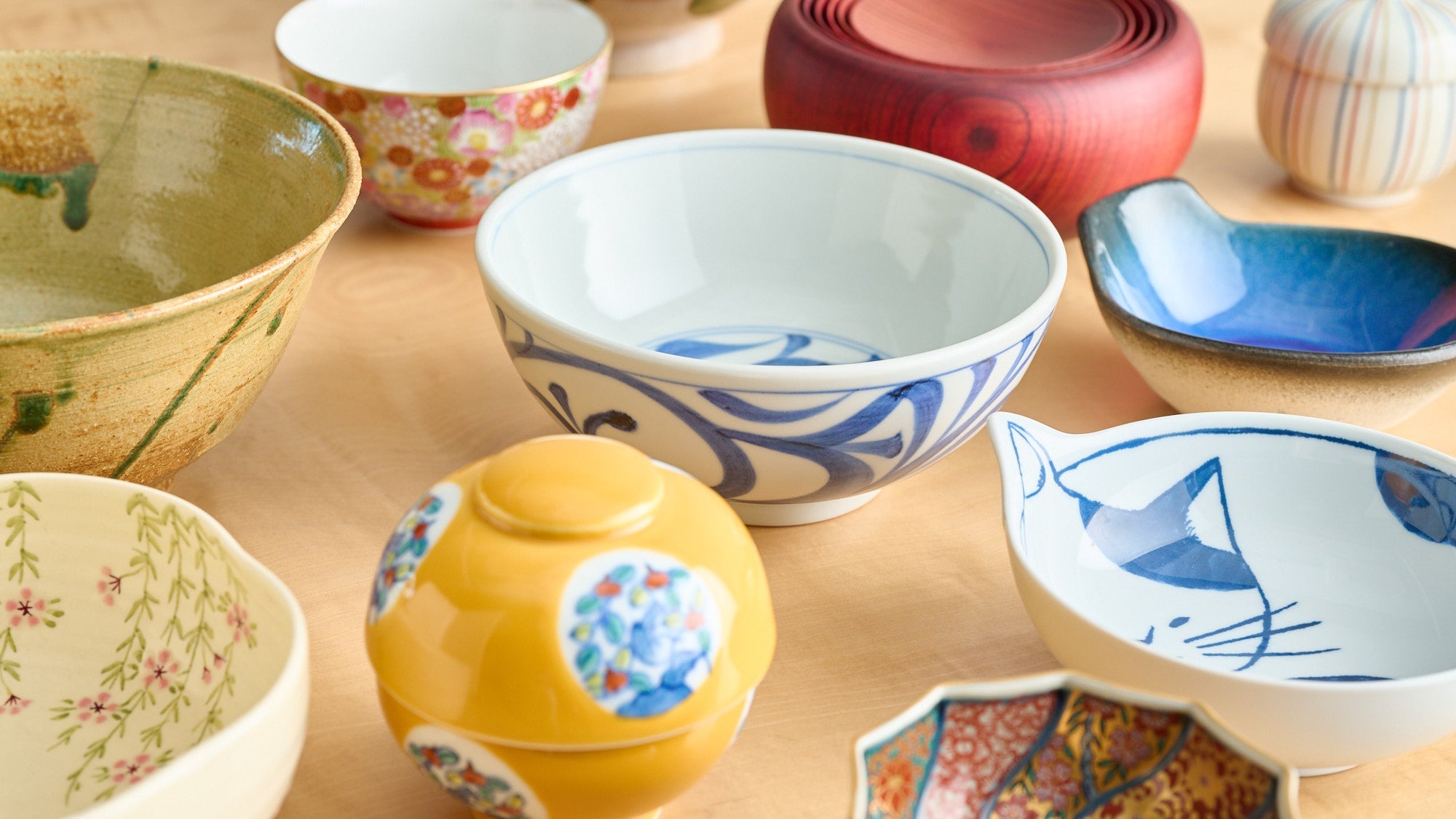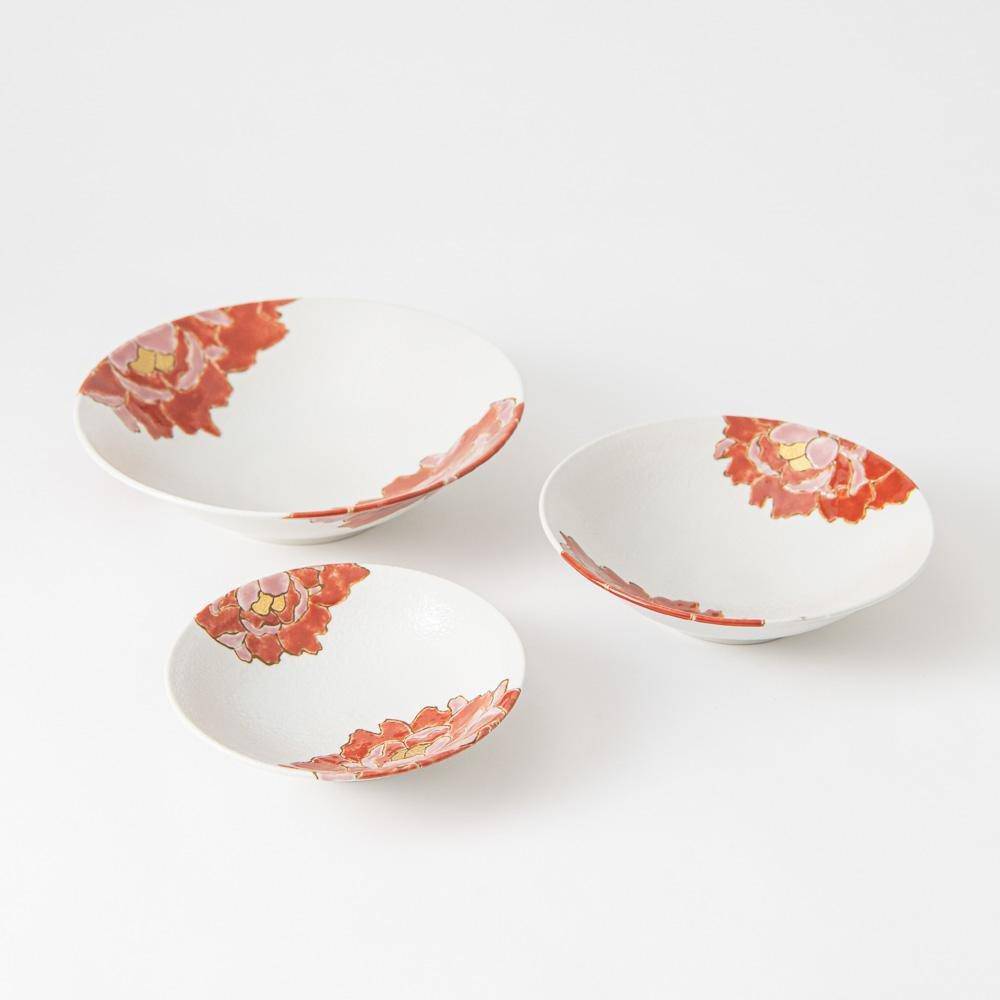
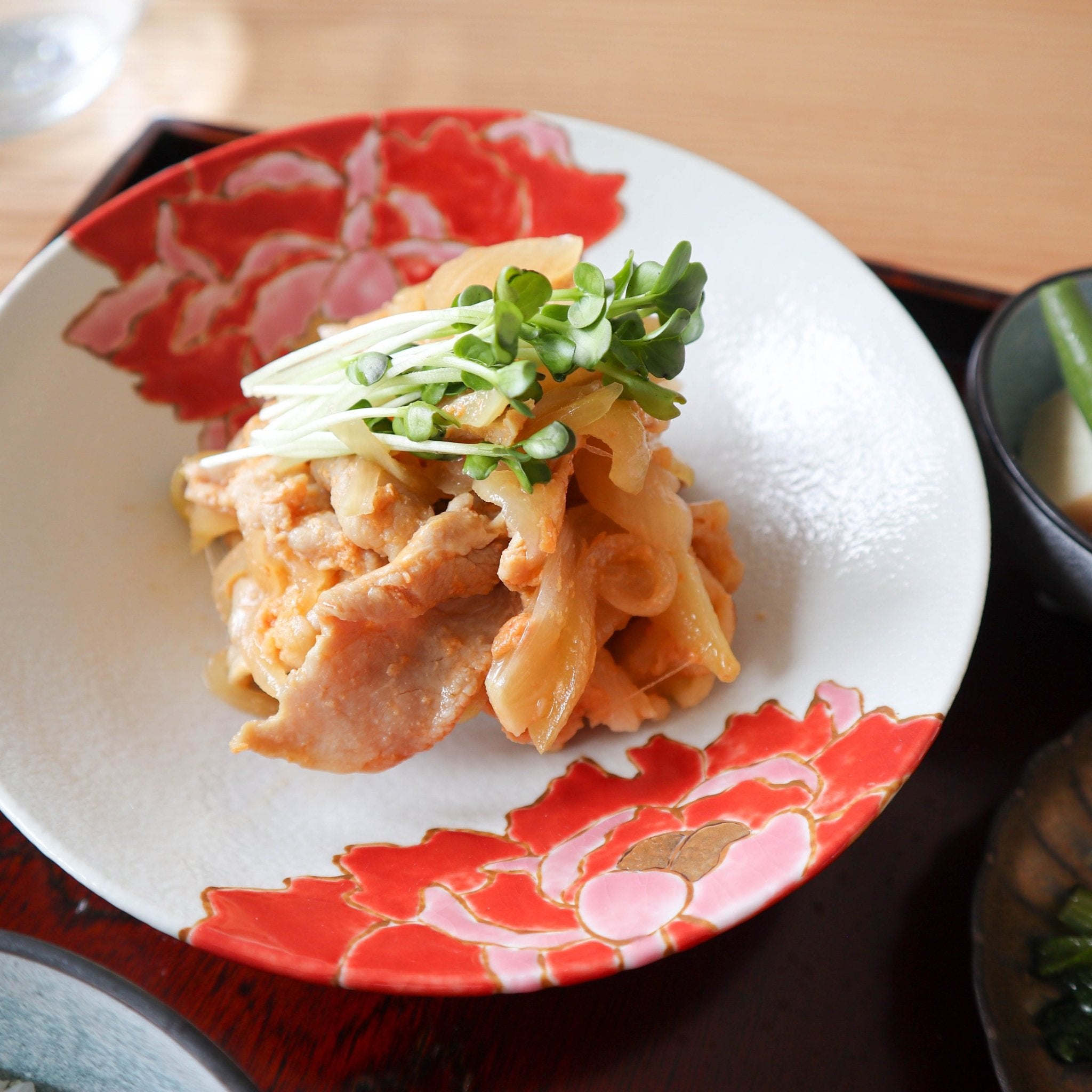
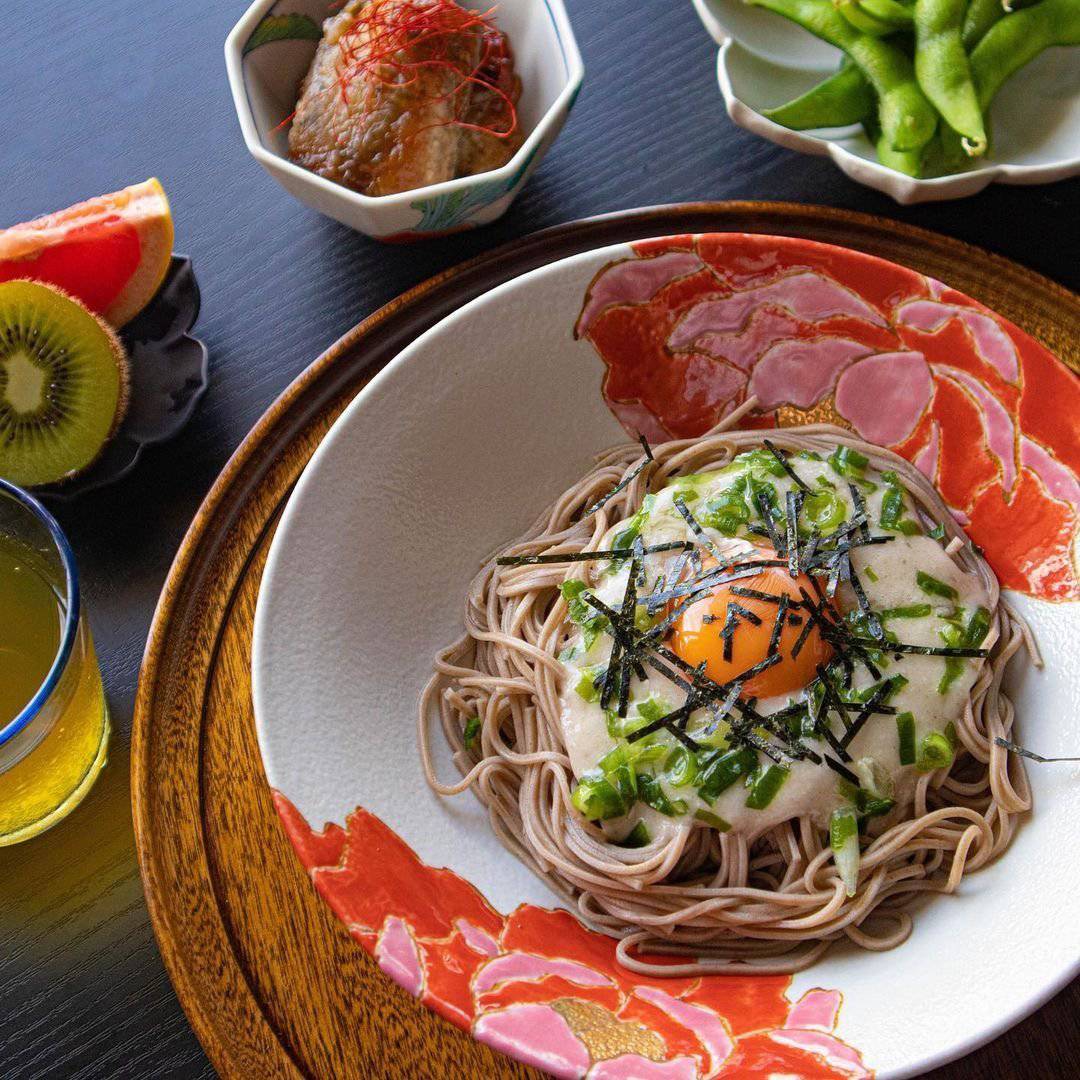
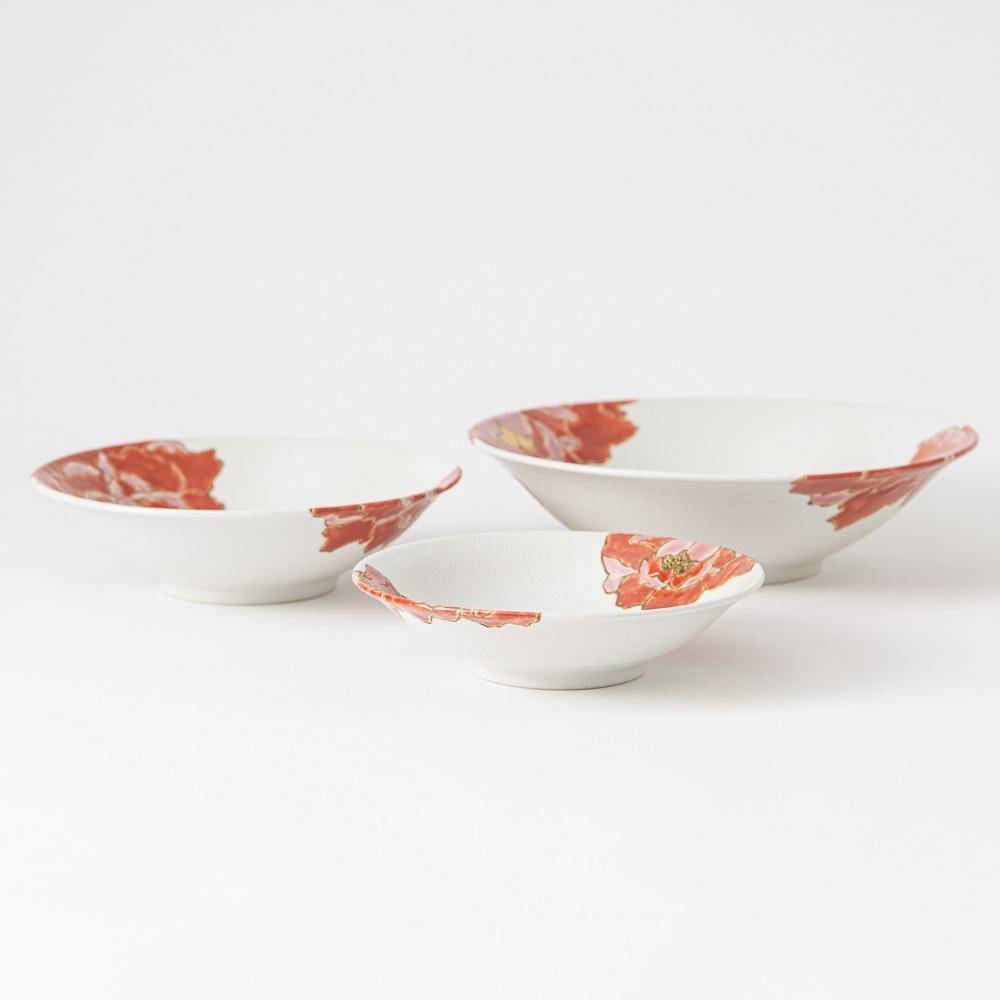
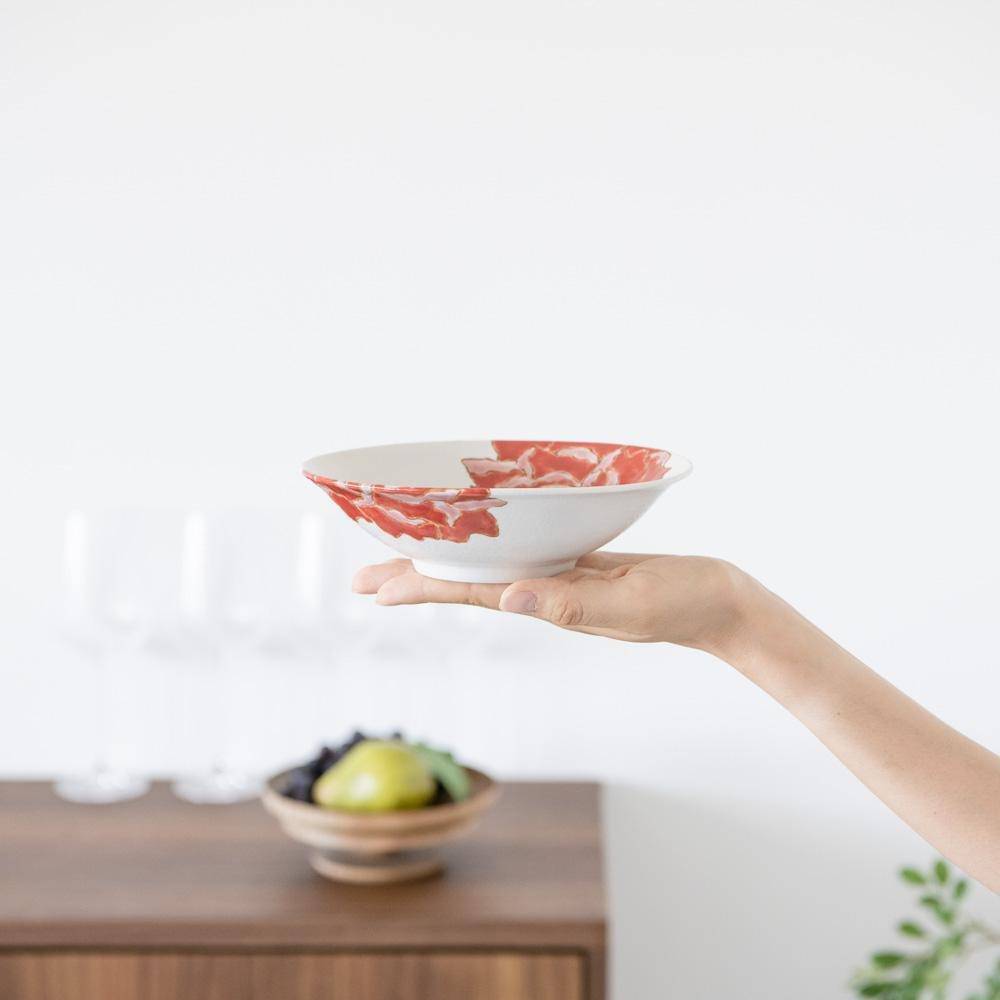
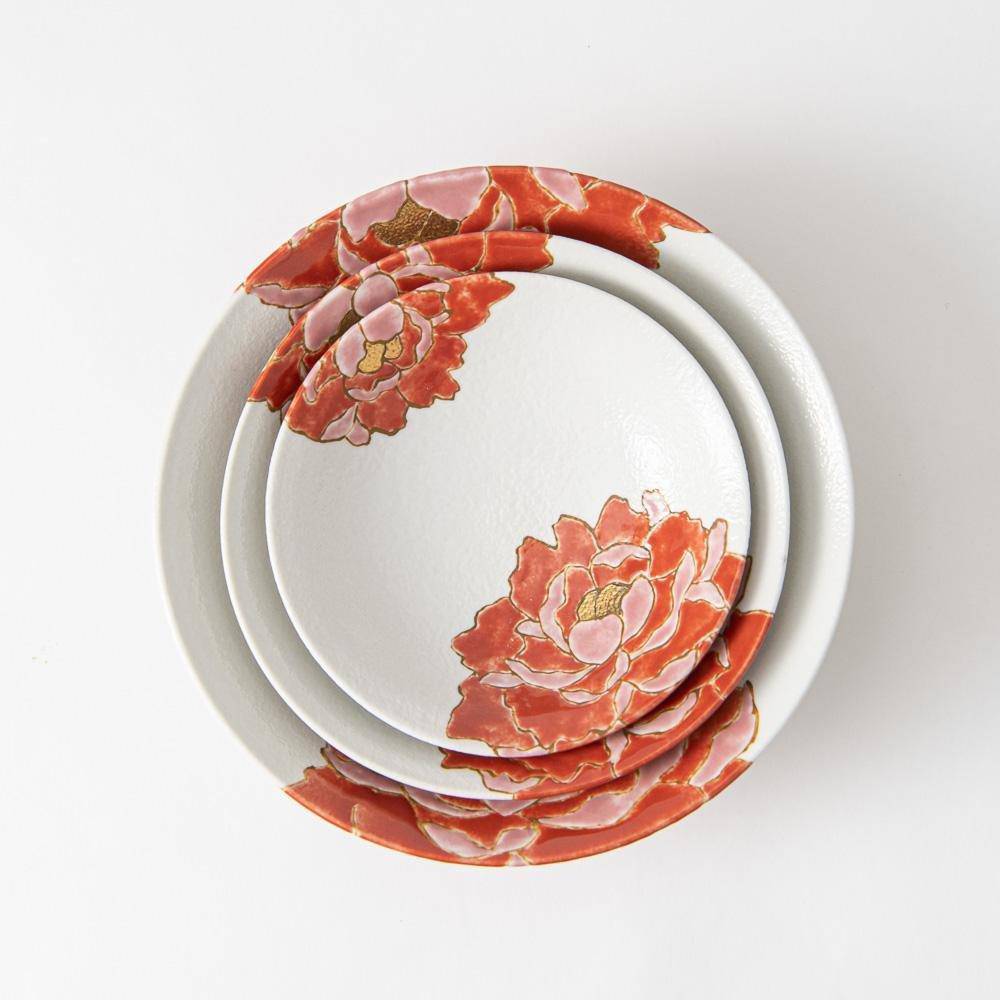
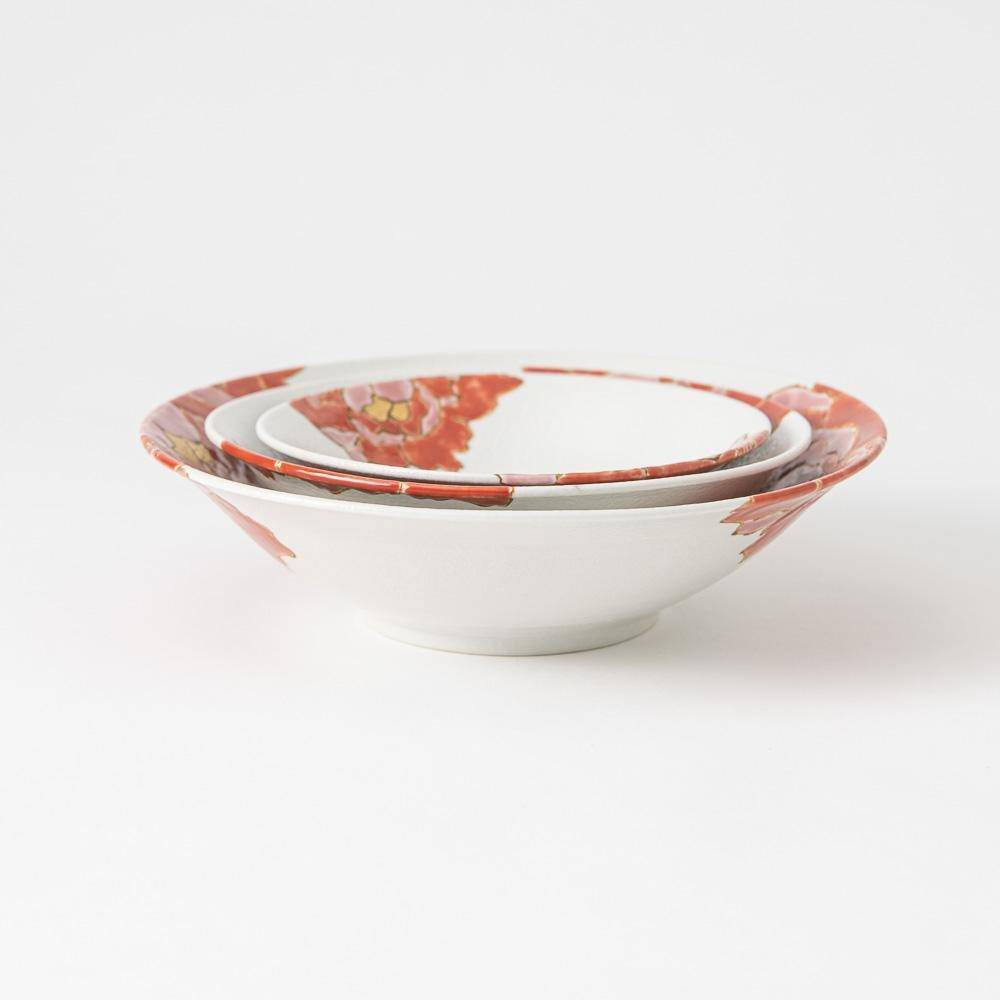
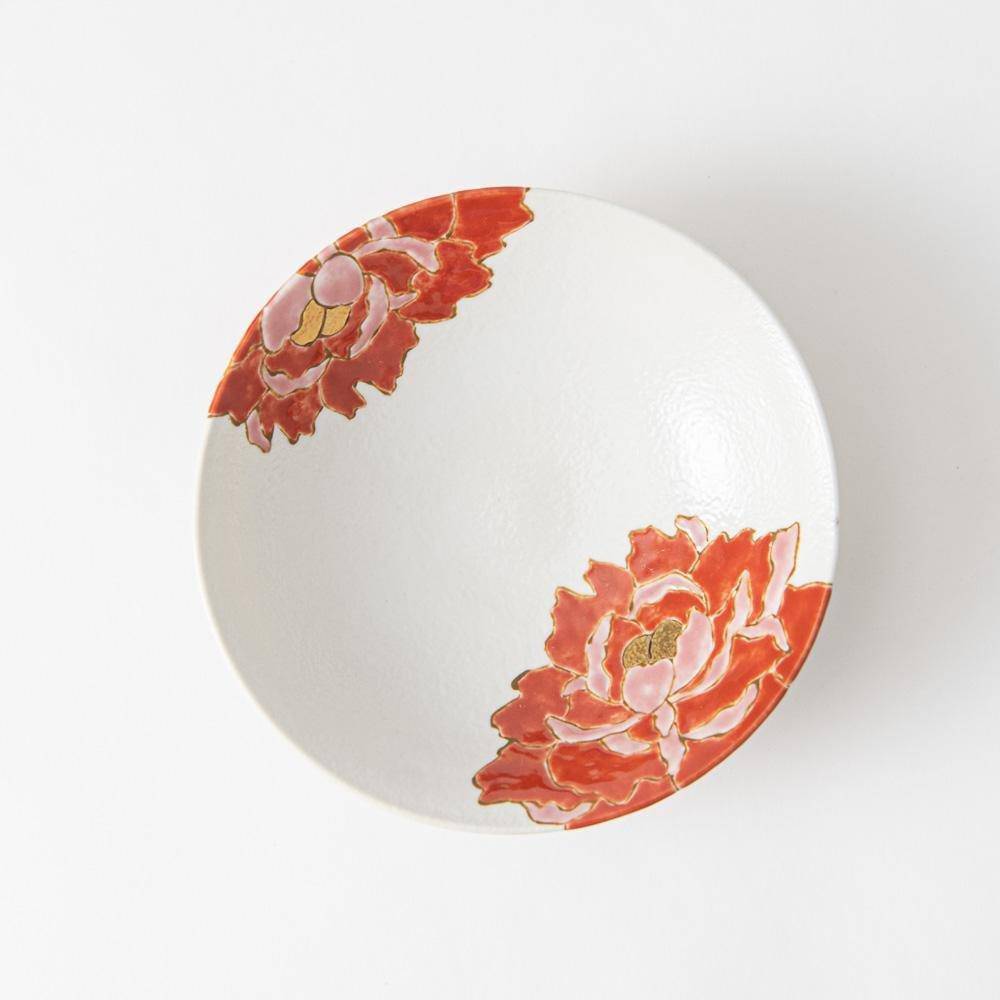
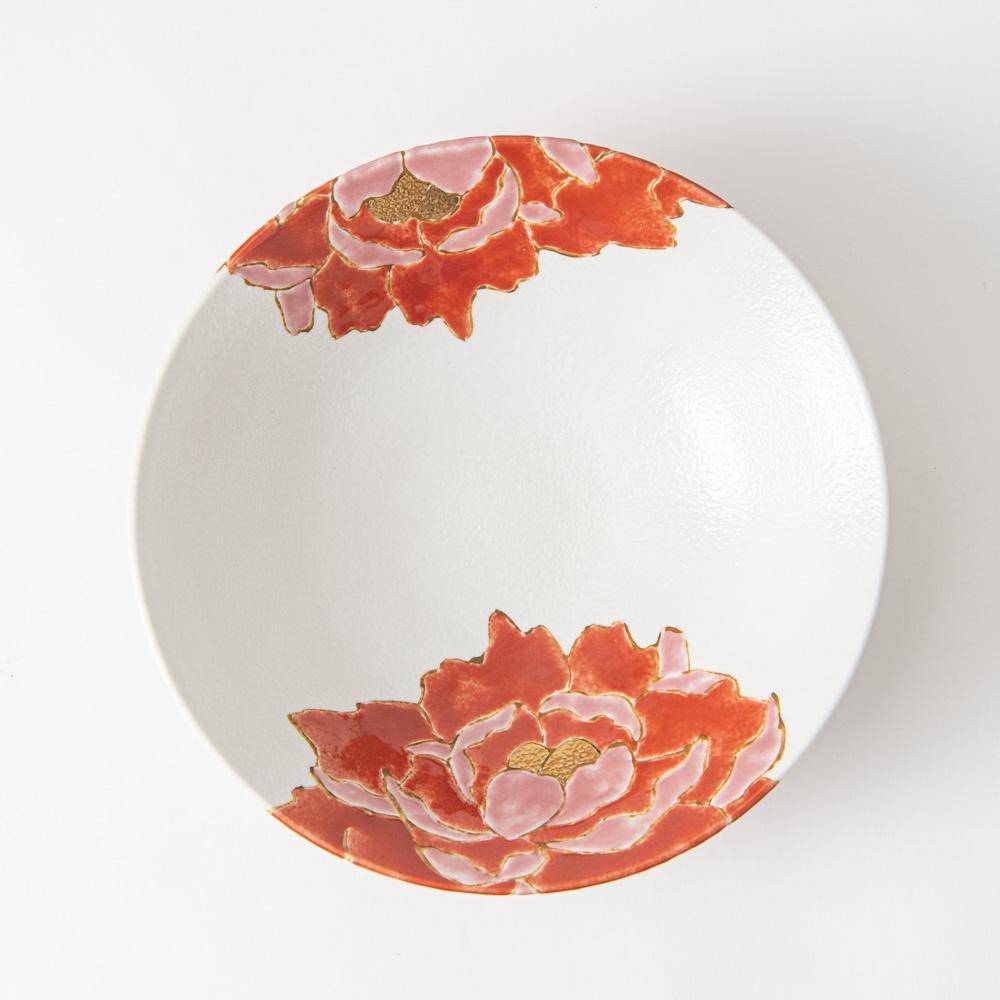
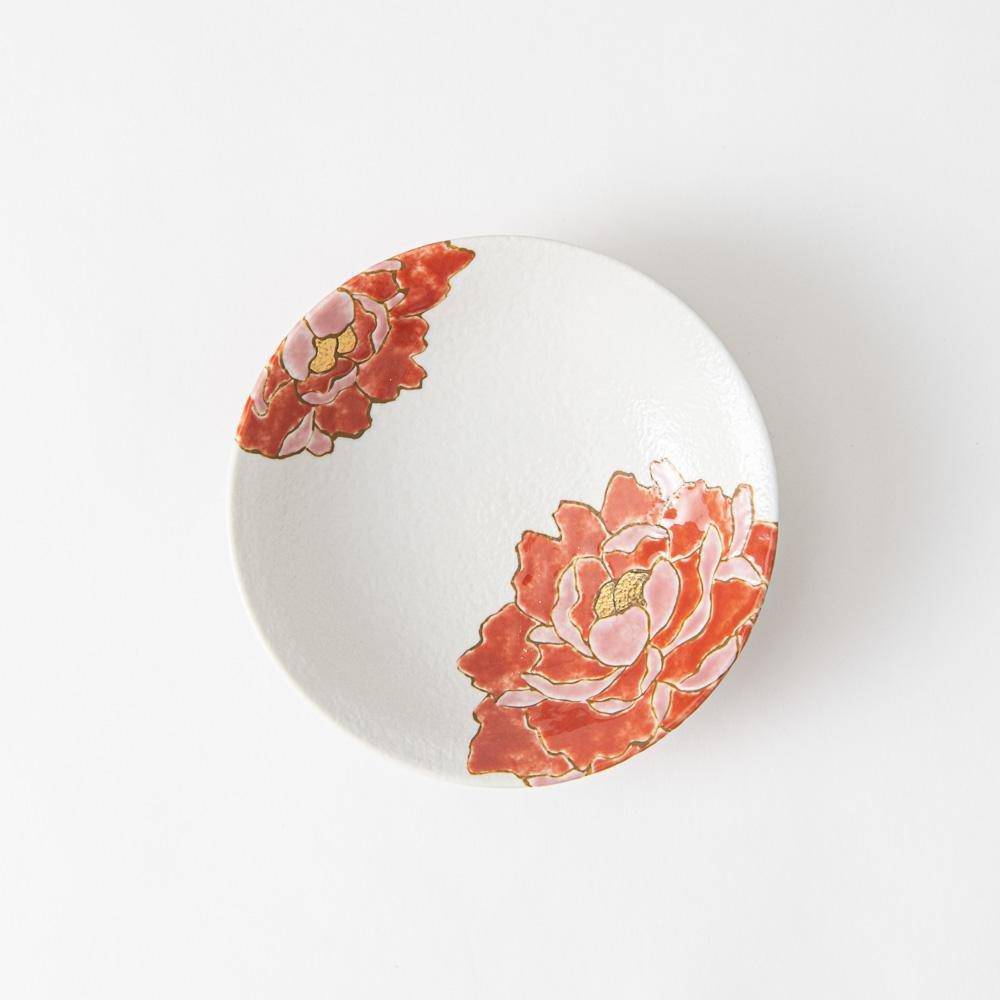


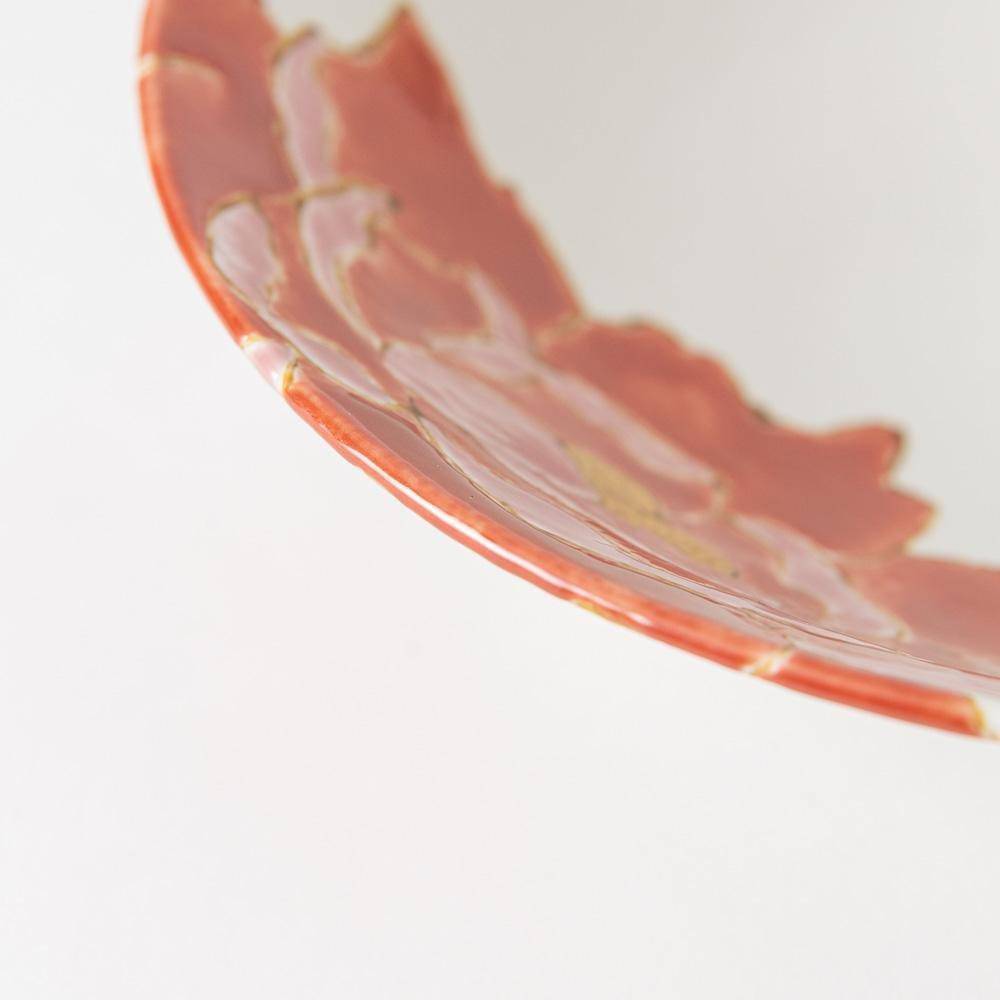
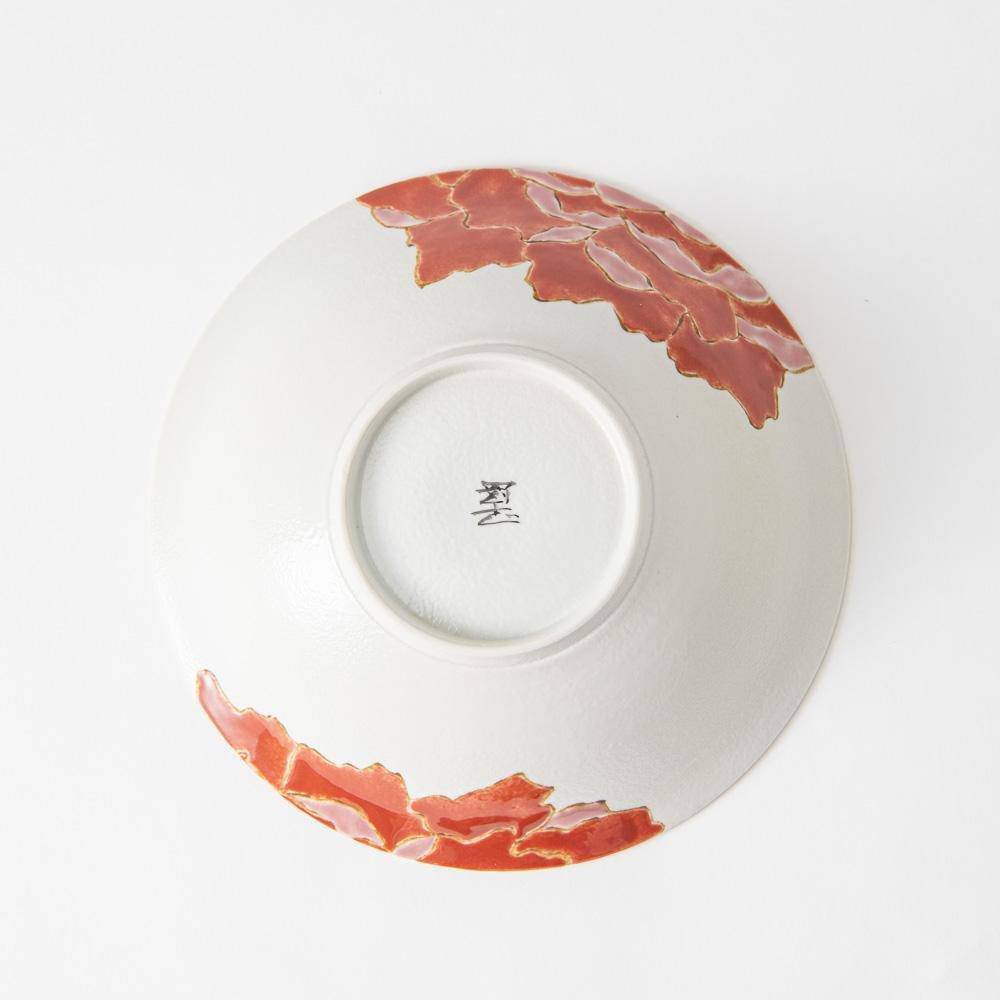
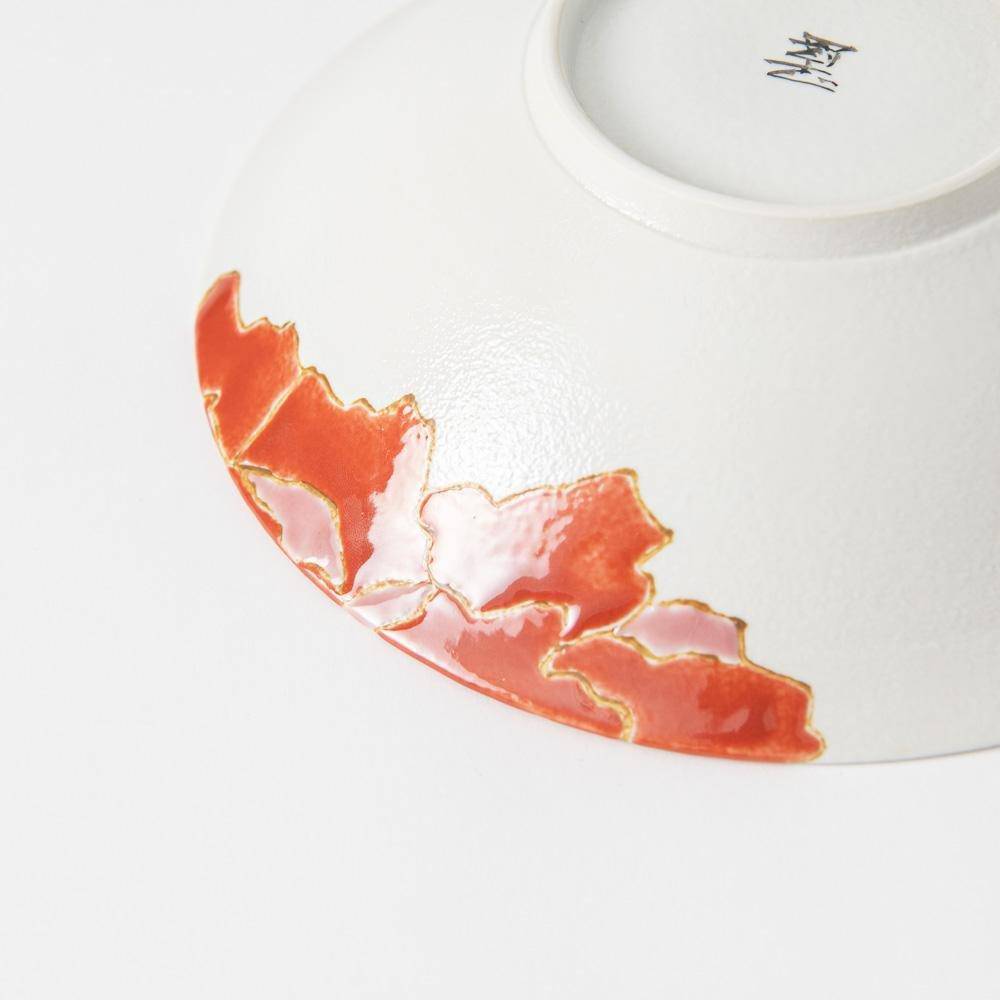
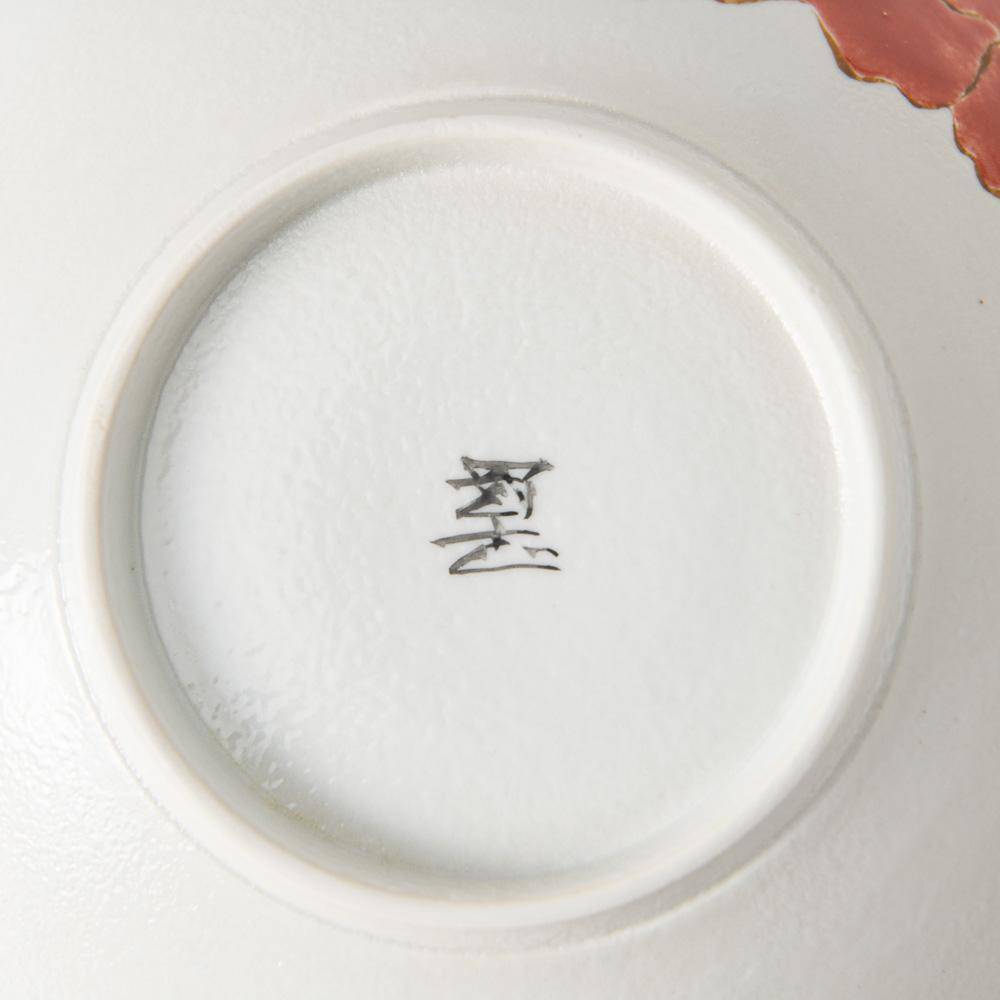
Red Peony Bowl Set A
Estimated Shipping Widget will be displayed here!
This gorgeous Japanese bowl set adorned with a bright red peony is made by Sato Tsuyoshi, a Kutani ware artisan known for his use of bright colors and florals.
With brush painting, which is a characteristic of Kutani ware, a thick peony motif is drawn as if it bloomed on bowls, and the center is decorated with gold leaf.
The simple and modern design without rims goes well with any dish, not just Japanese.
The small bowl is perfect for serving a small amount of side dishes for one person, and the medium bowl is suitable for salads and fruits. The large bowl is perfect for salads and appetizers for several people, and because it is deep, you can put Nimono (Simmered food), soup, pasta, etc., or use it as a Donburi bowl.
DETAILS
| Quantity | Set of 3 bowls |
| Size | D 21 cm (8.26 in) / D 17.5 cm (6.88 in) / D 14.5 cm (5.7 in) |
| Material | Porcelain |
| Microwave | No |
| Dishwasher | No |
Maker / Brand
Souraku-an, founded in 2013 and headed by traditional Kutani ware craftsperson Sato Tsuyoshi, consists of creative and ambitious young craftspeople. Sato learned Kutani ware techniques in addition to mastering ink painting techniques to create his own unique works.
Souraku-an values the classical aesthetics of traditional Kutani ware and leverages the intrinsic charm of materials such as clay, glaze, and paint. Each item is individually formed on a potter's wheel, fired, carefully painted using the traditional five colors of Kutani ware, and fired again in a kiln. With the aesthetic sense that has been handed down from generation to generation in Kutani ware, Souraku-an creates designs that feel at once traditional and modern.
Crafts
Kutani ware is a pottery produced in the Kaga region of Ishikawa Prefecture and it has a history of over 350 years. It is characterized by the heavy brilliance of the five colors of green, yellow, red, purple, and navy blue that are applied to the bold and daring lines. Its long history has evolved through the tireless efforts and enthusiasm of people who have sought innovation while maintaining tradition.
The beauty of the various styles and methods of painting is known as "Japan Kutani" and is highly regarded around the world.
Choose options
















Bowl Sets
This collection features Japanese bowls that come as sets. Some contain bowls of the same size and pattern, while others consist of carefully matched size and design variations. Here you will also find oryoki bowl sets, Zen-inspired nesting bowls that pleasingly combine into a single neat stack. Regardless of the variety, bringing a handcrafted bowl set into your home is a beautiful and easy way to create harmony and unity in any table setting.
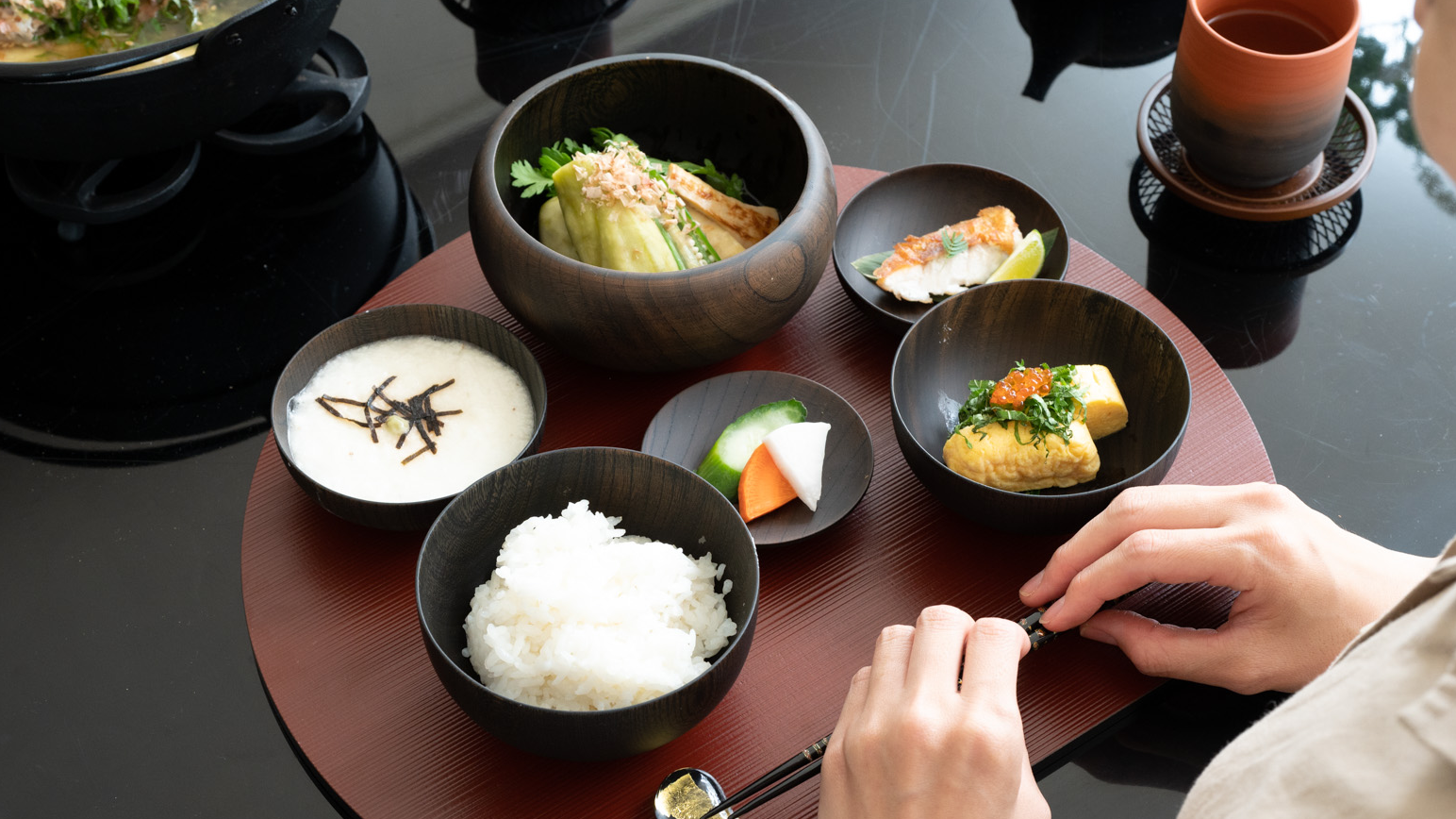
Guide to Japanese Bowls
